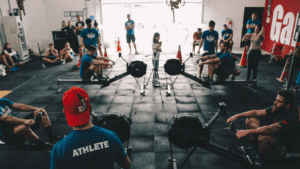Manga gastrica, or gastric sleeve surgery, is transforming lives for those struggling with obesity. This popular procedure reduces the stomach’s size, helping people eat less and lose weight effectively. With obesity rates climbing globally—42.4% in the U.S. by 2018, per the CDC—manga gastrica offers hope for healthier living. It’s not just about shedding pounds; it’s about reclaiming energy, confidence, and well-being. From reducing diabetes to easing joint pain, this surgery tackles obesity-related health issues with fewer complications than other methods like gastric bypass. But it’s not a quick fix—it demands lifestyle changes and commitment. This article explores why manga gastrica is a top choice, its benefits, risks, and what life looks like after surgery. With a warm, human perspective, we’ll dive into how this procedure is helping people rewrite their health stories.
What Is Manga Gastrica?
Manga gastrica is a bariatric surgery that removes about 80% of the stomach, leaving a narrow, sleeve-shaped pouch. This smaller stomach holds less food, reducing hunger by lowering ghrelin, the appetite hormone. Performed laparoscopically with small incisions, it’s less invasive than older methods. The procedure, ideal for those with a BMI over 35 or 30 with health issues like diabetes, takes about an hour. Patients lose 50–70% of excess weight within a year, per a 2021 study. Unlike gastric bypass, it avoids rerouting intestines, lowering complication risks. Manga gastrica is a tool, not a cure, requiring diet and exercise for lasting results. Its growing popularity—overtaking bypass globally—reflects its effectiveness and simpler recovery.
How It Works
The surgery involves removing the stomach’s outer curve, creating a tube-like pouch with a capacity of 70–100 ml, compared to a normal stomach’s 1000 ml. This limits food intake, making you feel full faster. By reducing ghrelin production, manga gastrica curbs hunger, helping control cravings. Done under general anesthesia, it uses high-tech tools for precision and safety. Patients typically stay in the hospital for 1–2 days. The procedure’s restrictive nature means you eat less and absorb fewer calories, driving weight loss. Long-term success depends on healthy habits, like balanced meals and regular activity.
Who It’s For
Manga gastrica suits people with a BMI over 35, or 30 with conditions like hypertension or type 2 diabetes. It’s not for everyone—doctors assess medical history, mental health, and commitment to lifestyle changes. Candidates should be ready for dietary shifts and follow-up care, including vitamins to prevent deficiencies. Those with severe obesity-related issues, like heart disease or joint pain, benefit most. A 2023 case study showed a 24-year-old with obesity grade II achieving significant weight loss post-surgery. Consultation with a bariatric surgeon ensures it’s the right fit.
Benefits of Manga Gastrica
The benefits of manga gastrica go beyond weight loss. Patients often see improvements in diabetes, high blood pressure, and cholesterol, boosting overall health. A 2025 post by @perezgalazmd noted 23–26% total body weight loss in the first year, with 49–61% excess weight loss long-term. Non-scale victories, like climbing stairs without pain or fitting into smaller clothes, transform lives. The surgery’s lower complication rate compared to gastric bypass makes it safer, with faster recovery. By reducing hunger, it empowers patients to make healthier choices, fostering a renewed sense of control and confidence in their daily lives.
Health Improvements
Manga gastrica tackles obesity-related conditions head-on. Studies show 60–70% of patients with type 2 diabetes achieve remission post-surgery. It also lowers risks of heart disease, sleep apnea, and joint issues. A 2021 study reported better cholesterol levels and blood pressure in patients within months. By shrinking the stomach, the surgery helps maintain consistent blood sugar levels, reducing medication needs. These changes improve quality of life, letting people move freely and live actively. The health gains make manga gastrica a powerful tool for long-term wellness, not just weight loss.
Lifestyle Transformation
Beyond physical health, manga gastrica reshapes daily life. Patients report newfound energy for activities like hiking or playing with kids. A 2025 article highlighted “non-scale victories” like dancing at a wedding without discomfort. Smaller portions become normal, encouraging mindful eating. Many find confidence in social settings, no longer feeling judged for their weight. However, success requires commitment—regular exercise and balanced diets are key. Support groups and counseling help navigate emotional changes, like adjusting to new eating habits or body image. This transformation makes manga gastrica a catalyst for a fuller, happier life.
Risks and Challenges
Like any surgery, manga gastrica has risks. Leaks or infections, though rare (less than 2% of cases), can occur. A 2013 SAGES study noted gastroesophageal reflux as a common issue, affecting some patients long-term. Nutritional deficiencies, like low vitamin B12 or iron, require lifelong supplements. Emotionally, adjusting to smaller meals can feel isolating, as food often ties to culture and socializing. Some face body dysmorphia, struggling with their new appearance. Pre- and post-surgery counseling is vital to manage these challenges. Despite risks, careful planning and follow-up care make manga gastrica a safe option for many.
Surgical Risks
The procedure’s laparoscopic approach minimizes risks, but complications like bleeding or leaks can happen. A 2019 meta-analysis found a 1–2% leak rate, treatable with prompt care. Infections or blood clots are rare but possible. Hiatal hernias may develop, causing reflux. Experienced surgeons and modern tools, as used in a 2023 MGH video, reduce these risks. Patients must follow post-op guidelines, like avoiding heavy lifting, to prevent issues. Choosing a certified bariatric surgeon with a strong track record ensures safer outcomes, making manga gastrica a reliable choice.
Emotional and Social Adjustments
Food is more than fuel—it’s tied to emotions and traditions. Manga gastrica patients may feel left out at gatherings due to smaller portions. A 2025 article noted some experience body dysmorphia, struggling to accept their slimmer selves. Social stigma, like judgment for “taking the easy way out,” can hurt. Counseling and support groups help address these feelings, teaching coping strategies. Building new habits, like focusing on non-food activities, eases the transition. With time, patients adapt, finding joy in their healthier, more active lives.
The Recovery Process
Recovery from manga gastrica is straightforward but requires discipline. Patients start with liquids, moving to pureed foods over weeks, then solids by six weeks. Hospital stays last 1–2 days, with most returning to work in 2–3 weeks. A 2023 Peruvian case study emphasized gradual dietary changes to avoid complications. Lifelong supplements—calcium, vitamin B12, and iron—are essential to prevent deficiencies. Regular check-ups monitor progress, ensuring weight loss and health gains. Exercise, starting with light walks, boosts recovery. With proper care, patients see steady progress, making recovery a hopeful step toward a new life.
Dietary Changes
Post-surgery, patients follow a strict diet to heal and adapt. For the first week, it’s clear liquids like water or broth. Weeks 2–4 shift to pureed foods, like yogurt or mashed vegetables. By week six, soft solids are introduced. A 2021 study stressed small, protein-rich meals to maintain muscle and energy. Patients must avoid sugary or fatty foods to prevent “dumping syndrome,” which causes nausea. Lifelong habits include eating slowly and staying hydrated. Nutritionists guide this process, ensuring patients adjust to their smaller stomach while staying healthy.
Long-Term Care
Manga gastrica requires lifelong commitment. Daily supplements—bariatric multivitamins, calcium, and iron—prevent deficiencies, especially for women of menstruating age. Regular doctor visits track weight loss and health markers. A 2025 post noted 23–26% weight loss in the first year, but maintaining it requires exercise and balanced eating. Support groups offer emotional backing, helping patients navigate challenges like cravings or social pressures. Staying consistent with these habits ensures lasting benefits, from better health to renewed confidence, making manga gastrica a sustainable choice.
Why Choose Manga Gastrica?
Manga gastrica stands out for its balance of effectiveness and safety. It delivers significant weight loss—up to 70% of excess weight—while improving conditions like diabetes and hypertension. Compared to gastric bypass, it has fewer complications and a simpler recovery. A 2021 study showed it outperforms gastric banding in weight loss with less maintenance. Its minimally invasive nature suits those seeking lasting results without major surgery. However, it’s not for everyone—commitment to lifestyle changes is crucial. For those ready to transform their health, manga gastrica offers a powerful, life-changing path.
Comparison to Other Surgeries
Manga gastrica is less complex than gastric bypass, which reroutes intestines and has higher risks. A 2019 meta-analysis found manga gastrica achieves similar weight loss to bypass (49–61% excess weight) but with fewer complications. Unlike gastric banding, which requires adjustments, manga gastrica is a one-time procedure. It’s also less invasive than older methods like stomach stapling. However, it’s irreversible, unlike banding. For patients wanting effective weight loss with lower risks, manga gastrica is often the preferred choice, offering a balance of results and safety.
Motivation for Change
The surgery sparks more than physical change—it ignites a drive to live better. Patients often feel motivated to adopt healthier habits, like eating fruits and vegetables or exercising regularly. A 2023 article noted that reduced appetite encourages a shift to balanced diets. Success stories, like a patient dancing at a wedding post-surgery, inspire others. Support from family, friends, or groups reinforces this motivation. Manga gastrica isn’t just about a smaller stomach—it’s about embracing a new mindset, making it a catalyst for lasting, positive change.
Conclusion
Manga gastrica is more than a surgery—it’s a fresh start for those battling obesity. By reducing the stomach’s size, it helps people lose weight, improve health, and reclaim their lives. From easing diabetes to boosting confidence, its benefits are profound, though it comes with risks like leaks or emotional adjustments. Recovery demands discipline, with dietary changes and lifelong supplements, but the rewards—energy, mobility, and joy—are worth it. Compared to other surgeries, manga gastrica offers a safer, effective path. For those ready to commit, it’s a powerful step toward a healthier, happier future.




